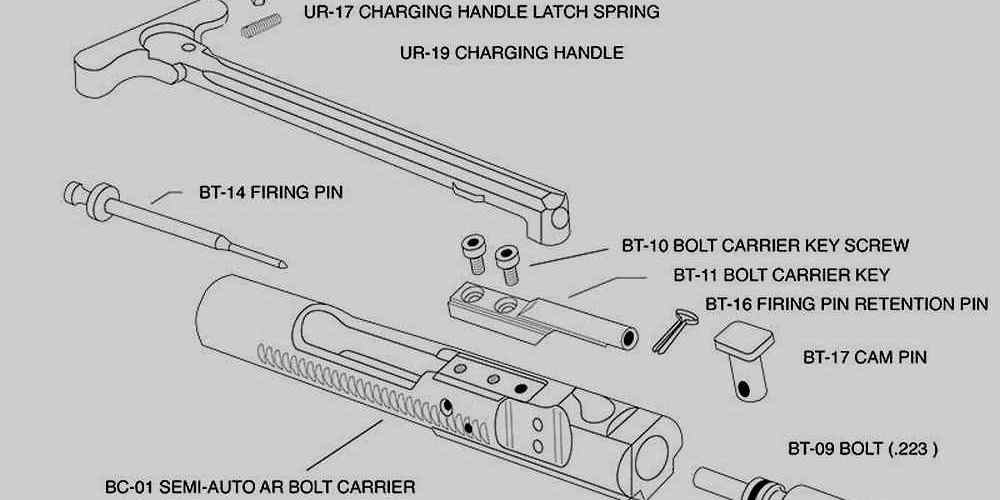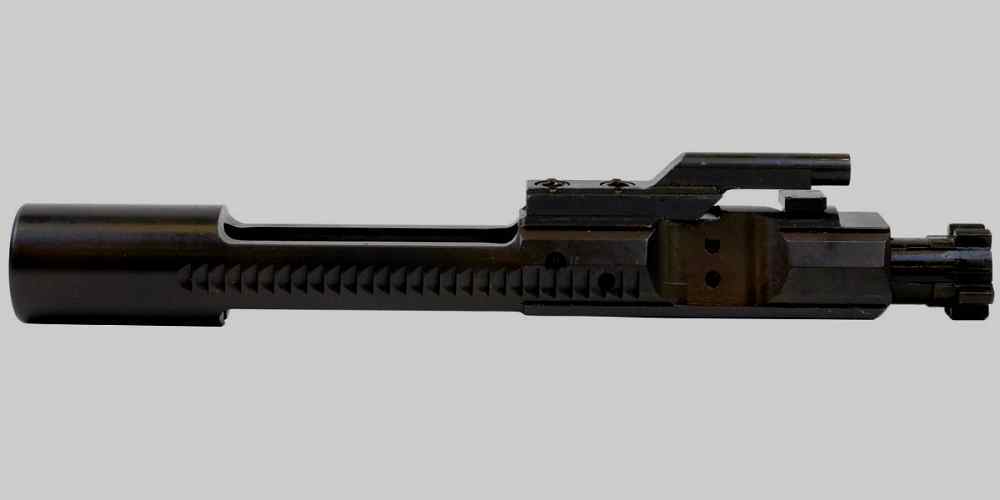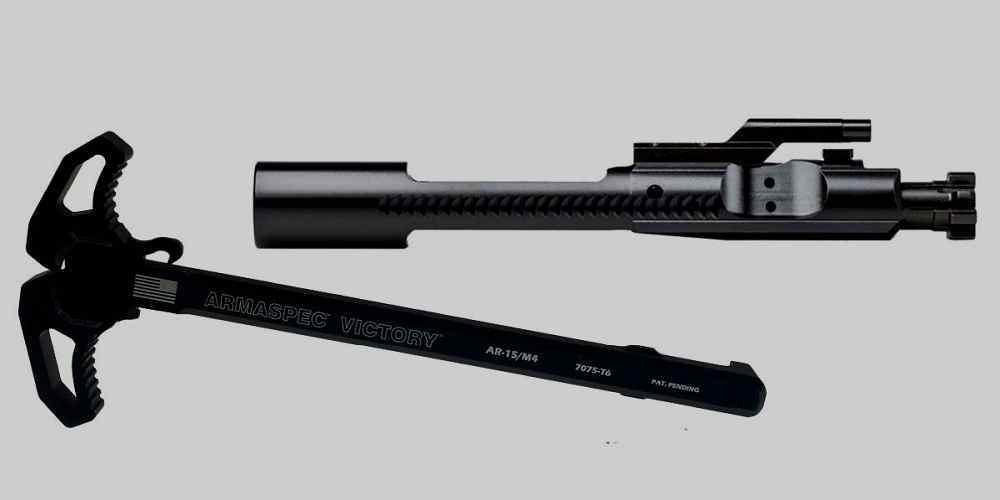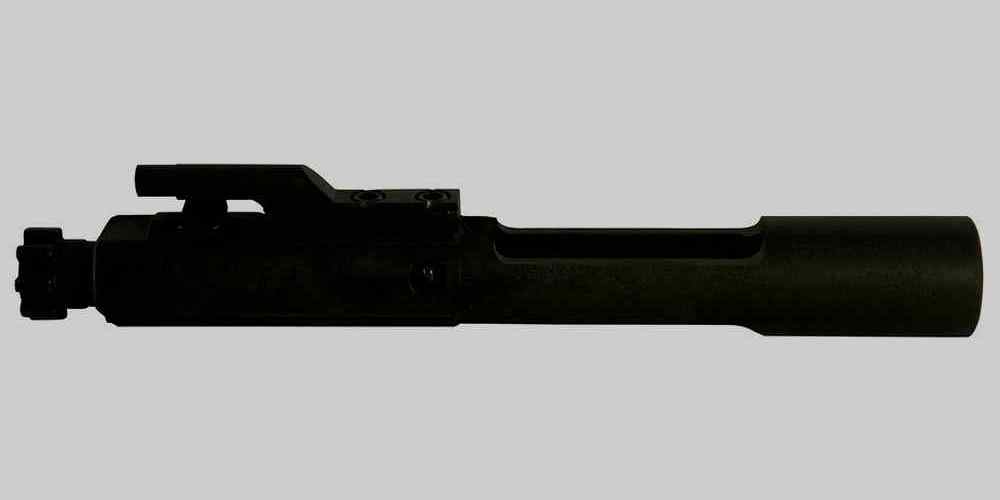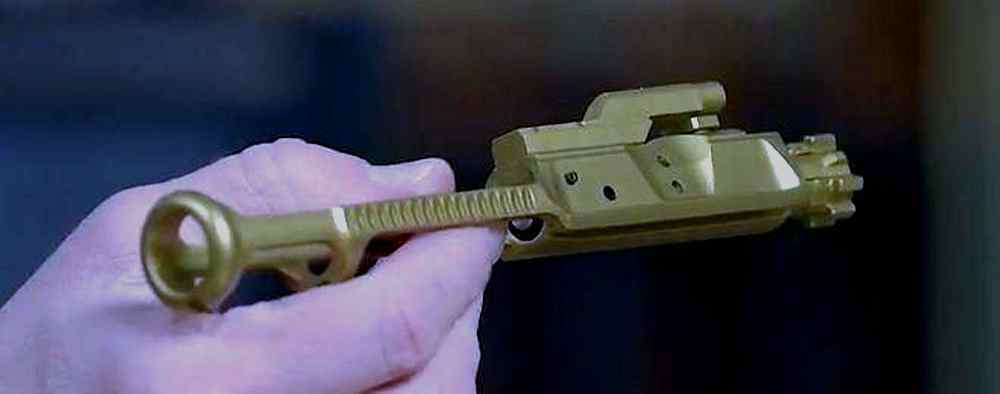“Advanced BCG Technologies: Enhancing Performance with Reduced Friction and Wear”
Benefits of Using Advanced BCG Technologies for Friction Reduction
When it comes to reducing friction and wear in mechanical systems, advanced BCG technologies offer a cutting-edge solution that can significantly improve the performance and longevity of various components. These coatings are designed to provide a protective barrier between moving parts, reducing the amount of friction generated during operation and minimizing the wear and tear that can occur over time.
One of the key benefits of using advanced BCG technologies for friction reduction is the ability to improve the efficiency of mechanical systems. By reducing the amount of friction between moving parts, these coatings can help to minimize energy loss and improve overall performance. This can result in lower operating costs, increased productivity, and extended equipment life.
In addition to improving efficiency, advanced BCG technologies can also help to reduce maintenance requirements. By minimizing wear and tear on components, these coatings can help to prolong the life of mechanical systems and reduce the need for frequent repairs and replacements. This can result in significant cost savings over time and help to keep equipment running smoothly for longer periods.
Another benefit of using advanced BCG technologies for friction reduction is the ability to enhance the durability of components. These coatings are designed to provide a tough, protective layer that can withstand the rigors of daily operation and help to prevent damage from occurring. This can help to extend the life of mechanical systems and reduce the risk of unexpected failures or breakdowns.
Furthermore, advanced BCG technologies can also help to improve the performance of mechanical systems in harsh operating environments. These coatings are designed to provide excellent resistance to corrosion, abrasion, and other forms of damage, making them ideal for use in challenging conditions. This can help to ensure that equipment remains operational and reliable, even in the most demanding applications.
Overall, the benefits of using advanced BCG technologies for friction reduction are clear. These coatings can help to improve efficiency, reduce maintenance requirements, enhance durability, and improve performance in harsh operating environments. By incorporating these advanced technologies into mechanical systems, manufacturers can enjoy a wide range of advantages that can help to boost productivity, reduce costs, and extend the life of equipment.
In conclusion, advanced BCG technologies offer a powerful solution for reducing friction and wear in mechanical systems. By providing a protective barrier between moving parts, these coatings can help to improve efficiency, reduce maintenance requirements, enhance durability, and improve performance in challenging conditions. With so many benefits to offer, it’s no wonder that advanced BCG technologies are becoming increasingly popular in a wide range of industries.
How Advanced BCG Coatings Improve Wear Resistance
When it comes to improving wear resistance in various industries, advanced BCG coatings have proven to be a game-changer. These coatings are designed to reduce friction and wear on surfaces, ultimately extending the lifespan of components and machinery. In this article, we will explore how advanced BCG technologies work to improve wear resistance and why they are becoming increasingly popular in the manufacturing and engineering sectors.
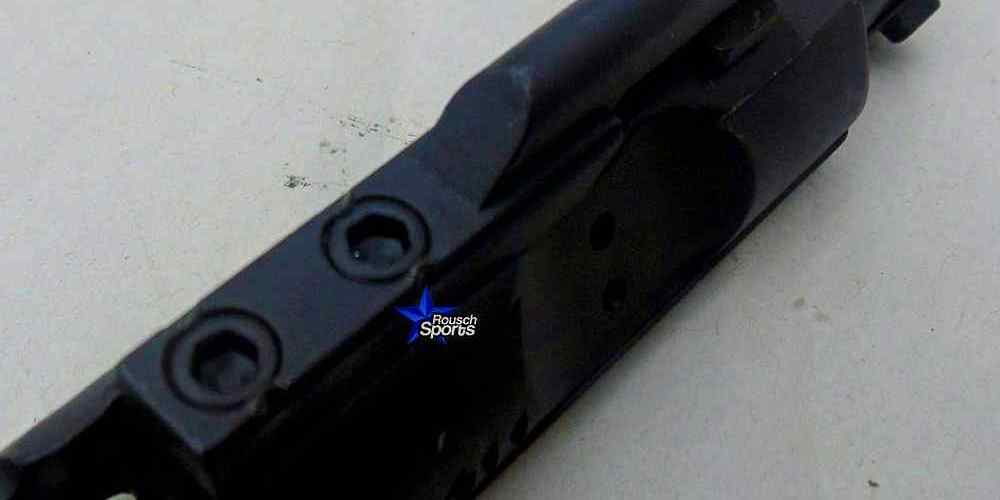
One of the key benefits of advanced BCG coatings is their ability to reduce friction between moving parts. Friction is a common cause of wear and tear on surfaces, leading to increased maintenance costs and downtime. By applying a thin layer of BCG coating to surfaces, friction is significantly reduced, allowing components to move more smoothly and efficiently. This not only improves the overall performance of machinery but also helps to prevent premature wear and damage.
In addition to reducing friction, advanced BCG coatings also provide excellent wear resistance. These coatings are specifically formulated to withstand harsh operating conditions, such as high temperatures, heavy loads, and corrosive environments. By creating a protective barrier on surfaces, BCG coatings help to prevent wear and corrosion, ultimately extending the lifespan of components and machinery.
Furthermore, advanced BCG coatings are highly versatile and can be applied to a wide range of materials, including metals, plastics, and ceramics. This makes them suitable for use in a variety of industries, from automotive and aerospace to medical and electronics. Whether it’s reducing friction on engine components or improving wear resistance on cutting tools, BCG coatings offer a cost-effective solution for enhancing the performance and durability of equipment.
Another advantage of advanced BCG coatings is their environmentally friendly nature. These coatings are typically free of harmful chemicals and toxins, making them safe for both workers and the environment. In addition, BCG coatings are designed to be long-lasting, reducing the need for frequent reapplications and minimizing waste. This not only helps to lower maintenance costs but also contributes to a more sustainable manufacturing process.
In conclusion, advanced BCG coatings are a highly effective solution for improving wear resistance in various industries. By reducing friction, providing excellent wear resistance, and offering versatility and environmental benefits, BCG coatings are quickly becoming the go-to choice for manufacturers and engineers looking to enhance the performance and longevity of their equipment. Whether it’s reducing maintenance costs, increasing productivity, or promoting sustainability, advanced BCG technologies are paving the way for a brighter future in the world of manufacturing and engineering.
Case Studies Highlighting the Effectiveness of Advanced BCG Technologies
When it comes to reducing friction and wear in industrial applications, advanced BCG technologies are leading the way. These coatings are designed to provide superior protection against the damaging effects of friction, helping to extend the lifespan of critical components and improve overall efficiency. In this article, we will explore some case studies that highlight the effectiveness of advanced BCG technologies in real-world applications.
One of the key benefits of advanced BCG coatings is their ability to reduce friction between moving parts. This can have a significant impact on the performance and longevity of machinery and equipment. In a recent case study, a manufacturer of automotive components implemented an advanced BCG coating on the gears of their transmission system. The result was a significant reduction in friction, leading to smoother operation and improved fuel efficiency.
In addition to reducing friction, advanced BCG coatings are also highly effective at reducing wear on critical components. In another case study, a manufacturer of industrial pumps applied an advanced BCG coating to the impeller of their pump system. This coating helped to protect the impeller from the abrasive effects of the fluid being pumped, resulting in a longer lifespan for the component and reduced maintenance costs for the manufacturer.
One of the key advantages of advanced BCG technologies is their versatility. These coatings can be applied to a wide range of materials, including metals, ceramics, and polymers, making them suitable for a variety of applications. In a case study involving a manufacturer of cutting tools, an advanced BCG coating was applied to the cutting edge of their tools. This coating helped to reduce friction during the cutting process, resulting in improved cutting performance and longer tool life.
Another important benefit of advanced BCG coatings is their ability to withstand extreme operating conditions. In a case study involving a manufacturer of aerospace components, an advanced BCG coating was applied to the bearings of a jet engine. Despite the high temperatures and pressures experienced during operation, the coating remained intact and provided excellent protection against friction and wear.
Overall, the case studies highlighted in this article demonstrate the effectiveness of advanced BCG technologies in reducing friction and wear in a variety of industrial applications. These coatings offer a cost-effective solution for improving the performance and longevity of critical components, helping manufacturers to reduce maintenance costs and downtime.
In conclusion, advanced BCG technologies are a valuable tool for manufacturers looking to improve the efficiency and reliability of their machinery and equipment. By reducing friction and wear, these coatings can help to extend the lifespan of critical components and improve overall performance. The case studies presented in this article serve as a testament to the effectiveness of advanced BCG technologies in real-world applications.
Future Trends in Advanced BCG Coatings for Friction and Wear Reduction
When it comes to reducing friction and wear in mechanical systems, advanced BCG technologies are paving the way for more efficient and durable solutions. BCG, or boron carbide-graphite, coatings have been used for decades to improve the performance of various components, from cutting tools to engine parts. However, recent advancements in BCG technology have led to the development of coatings that offer even greater benefits in terms of friction reduction and wear resistance.
One of the key advantages of advanced BCG coatings is their ability to significantly reduce friction between moving parts. This is achieved through the unique combination of boron carbide and graphite, which work together to create a smooth and slippery surface that minimizes contact and friction. As a result, components coated with advanced BCG coatings experience less wear and tear, leading to longer service life and improved performance.
In addition to reducing friction, advanced BCG coatings also offer superior wear resistance compared to traditional coatings. This is due to the hardness and durability of boron carbide, which is one of the hardest materials known to man. When combined with graphite, boron carbide forms a tough and resilient coating that can withstand high levels of stress and abrasion. As a result, components coated with advanced BCG coatings are better able to withstand the rigors of daily use and maintain their performance over time.
Another key benefit of advanced BCG coatings is their versatility and adaptability to a wide range of applications. Whether used in cutting tools, bearings, or engine components, these coatings can be tailored to meet the specific requirements of each application. This flexibility allows manufacturers to optimize the performance of their products and achieve greater efficiency and reliability.
Furthermore, advanced BCG coatings are also environmentally friendly, as they are free from harmful chemicals and toxins. This makes them a sustainable and eco-friendly choice for companies looking to reduce their environmental impact and meet strict regulatory requirements. By choosing advanced BCG coatings, manufacturers can not only improve the performance of their products but also contribute to a cleaner and healthier environment.
In conclusion, advanced BCG technologies are revolutionizing the way we approach friction and wear reduction in mechanical systems. With their unique combination of boron carbide and graphite, these coatings offer superior performance, durability, and versatility compared to traditional coatings. By reducing friction, improving wear resistance, and offering environmental benefits, advanced BCG coatings are helping manufacturers achieve greater efficiency and reliability in their products. As technology continues to advance, we can expect to see even more innovative applications of BCG coatings in the future, further enhancing the performance and longevity of mechanical systems across various industries.
Comparing Different Types of Advanced BCG Coatings for Various Applications
When it comes to reducing friction and wear in various applications, advanced BCG coatings have proven to be highly effective. These coatings are designed to provide a protective layer on surfaces, which helps to minimize friction and wear, ultimately extending the lifespan of the components. There are several different types of advanced BCG coatings available, each with its own unique properties and benefits. In this article, we will compare some of the most popular types of advanced BCG coatings and discuss their applications.
One of the most common types of advanced BCG coatings is diamond-like carbon (DLC) coating. DLC coatings are known for their exceptional hardness and low friction properties, making them ideal for applications where wear resistance is crucial. These coatings are often used in cutting tools, automotive components, and medical devices. DLC coatings can significantly reduce friction and wear, leading to improved performance and durability of the coated components.
Another popular type of advanced BCG coating is titanium nitride (TiN) coating. TiN coatings are known for their excellent adhesion and corrosion resistance properties. These coatings are often used in aerospace, automotive, and firearms industries. TiN coatings can provide a protective layer that reduces friction and wear, while also enhancing the appearance of the coated components. TiN coatings are particularly effective in high-temperature applications, where other coatings may fail.
Ceramic coatings are also widely used in advanced BCG technologies. Ceramic coatings are known for their exceptional hardness and thermal stability, making them ideal for high-temperature applications. These coatings are often used in cutting tools, bearings, and engine components. Ceramic coatings can provide a protective layer that reduces friction and wear, while also improving the performance and lifespan of the coated components. Ceramic coatings are particularly effective in applications where extreme wear resistance is required.
In addition to DLC, TiN, and ceramic coatings, there are several other types of advanced BCG coatings available, each with its own unique properties and benefits. For example, molybdenum disulfide (MoS2) coatings are known for their exceptional lubricity and low friction properties. These coatings are often used in automotive, aerospace, and industrial applications. MoS2 coatings can provide a protective layer that reduces friction and wear, while also improving the efficiency and performance of the coated components.
In conclusion, advanced BCG coatings are an essential technology for reducing friction and wear in various applications. DLC, TiN, ceramic, and MoS2 coatings are just a few examples of the many types of advanced BCG coatings available. Each type of coating has its own unique properties and benefits, making it suitable for specific applications. By choosing the right type of advanced BCG coating for your application, you can significantly improve the performance and durability of your components. Whether you are looking to enhance the wear resistance of cutting tools or improve the efficiency of engine components, advanced BCG coatings can help you achieve your goals.





